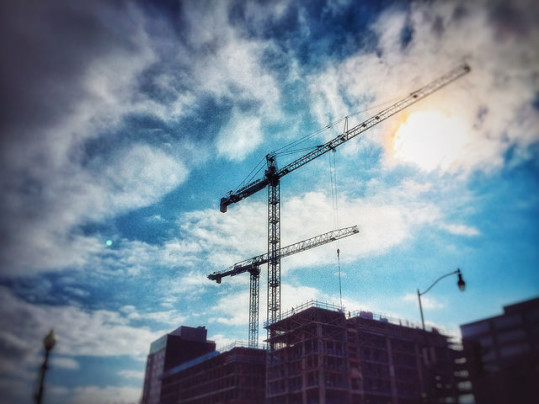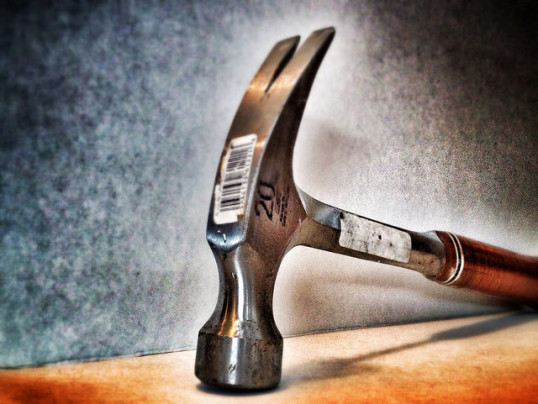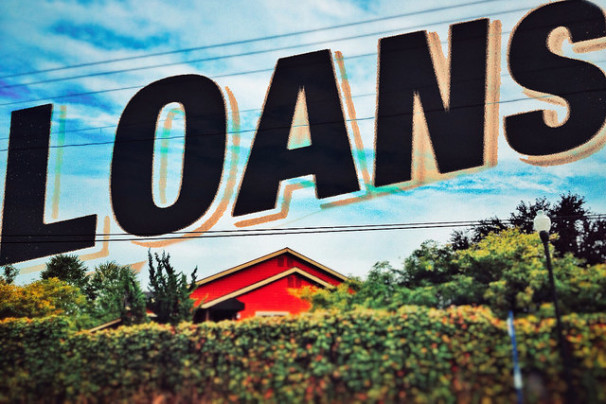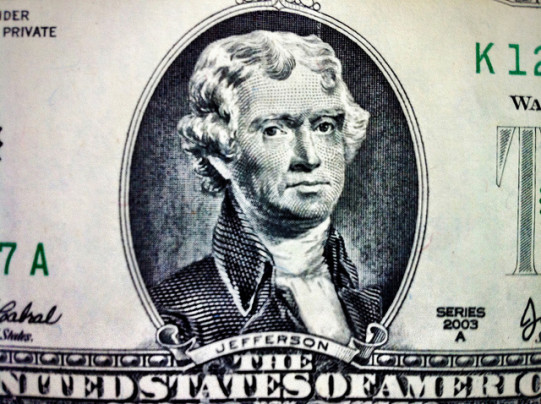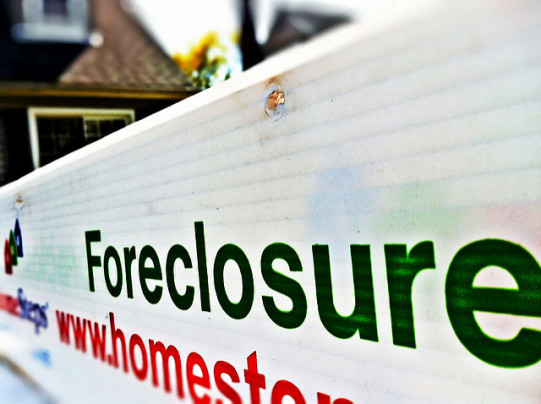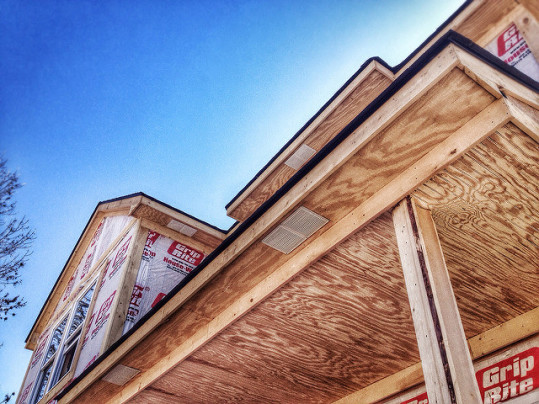New estimates from the U.S. Census Bureau and the Department of Housing and Urban Development show the number of new homes that broke ground in March fell nearly 9 percent from February’s figure. But though housing starts dropped month-over-month, they remain 14.2 percent above last year. Monthly construction numbers are normally up-and-down but have been increasingly volatile lately for a number of reasons. First off, multi-family construction has been slowing. This is partly due to the fact that there has been more demand for single-family homes than there has been for renter-occupied apartment units. That’s good news for the housing market and is backed up by the fact that single-family building permits – which are a good indicator of future construction – dropped just 1.2 percent from the previous month, while overall permits, which include multi-unit buildings, were down 7.7 percent. Also, harsh winter weather in some parts of the country can skew the overall number. For example, home building was down 21.2 percent in the Midwest but just 4.9 percent in the South, where the weather is warmer and most home building takes place. Overall, continued strength in the labor market and ongoing demand from buyers has most economists expecting construction to ramp up as the year goes on. More here.
Archive for April 2016
Builder Confidence Steady In April
New homes play an important role in bolstering the economy and balancing the housing market. When new homes are being built, it is a sign that the economy is doing well, jobs are being created, and Americans are on the move. Because of this, the National Association of Home Builders’ Housing Market Index is an important resource for gauging the market’s health and future outlook. Each month, the index tracks builder confidence in the market for new homes on a scale where any number above 50 indicates more builders view conditions as good than poor. In April, builder confidence held at 58 for the third consecutive month. Ed Brady, NAHB’s chairman, says it’s a sign that the market is slowly improving. “Builder confidence has held firm at 58 for three consecutive months, showing that the single-family housing sector continues to recover at a slow but consistent pace,” Brady said. “As we enter the spring home buying season, we should see the market move forward.” In support of Brady’s point, the index did find that builders are optimistic about sales over the next six months. In fact, the component measuring future expectations rose one point to 62. More here.
Mortgage Credit Becomes More Available
The Housing Finance Policy Center’s latest credit availability index found that it was easier for home buyers to secure financing during the fourth quarter of 2015 than it was during the previous quarter. This is significant because it was the first time in a year that the index showed mortgage credit becoming more available. Following the housing crash, lending standards tightened and it became more difficult for some prospective buyers to get a home loan. In subsequent years, standards have loosened somewhat but continue to be a concern for some buyers. For this reason, credit availability is an important indicator. As it becomes easier to get a home loan, potential buyers who once weren’t able to qualify for a loan may become eligible and decide to enter the market. But though increasing availability is encouraging, the report says there is still a lot of room for improvement. In fact, the Housing Finance Policy Center says the current default risk could be doubled and still be within the range of pre-crisis norms. The HCAI is updated quarterly and has been conducted since the first quarter of 1998. More here.
Affordability Index Finds Mixed Results
The National Association of Realtors Housing Affordability Index looks at the median price of an existing single-family home and compares it to the country’s median family income to determine whether or not the typical American family could qualify for a mortgage on the typical American home. According to the most recent results, affordability conditions across the country improved month-over-month in February but declined from one year earlier. Michael Hyman, a research data specialist with the NAR, says that housing affordability has fallen over the past year due to slightly higher mortgage rates and home prices that continue to outpace household income growth. For example, incomes increased approximately 2.1 percent year-over-year while home prices, during the same time period, have gone up 4.3 percent. However, home price gains have begun to moderate and grew at a slower pace in February than they did in January. Regionally speaking, the Midwest, South, and West saw affordability conditions decline from last year, while the Northeast actually improved. The Midwest remains the country’s most affordable area to buy a house. Also in the report, the median sales price for single-family homes sold during the month was $212,300. More here.
Mortgage Demand Spikes With Rate Drop
According to the Mortgage Bankers Association’s Weekly Applications Survey, demand for mortgage applications spiked last week, rising 10 percent over the previous week. The improvement, which included an 11 percent jump in refinance activity and an 8 percent increase in the purchase index, is a sign that low mortgage rates are beginning to inspire more Americans to enter the spring housing market. Mike Fratantoni, MBA’s chief economist, says demand for loans to buy homes – which are now 24 percent higher than last year – almost hit a six-year high last week. “Helped by a persistently strong job market and low rates, applications for both conventional and government home purchase loans increased last week,” Fratantoni said. “The purchase index was at its second highest level since May 2010. Applications to refinance also increased as the 30-year contract rate decreased to its lowest level since January 2015.” In fact, mortgage rates were down across most loan categories, including loans backed by the Federal Housing Administration, and 30-year fixed-rate mortgages with both conforming and jumbo balances. The MBA’s weekly survey has been conducted since 1990 and covers 75 percent of all retail residential mortgage applications. More here.
Foreclosure Inventory Lowest Since 2007
In February, the foreclosure inventory rate was the lowest for any month since November 2007, according to new numbers released by CoreLogic. Their February 2016 National Foreclosure Report shows foreclosure inventory was down 24 percent from one year earlier and now represents just 1.1 percent of all homes with a mortgage. Anand Nallathambi, president and CEO of CoreLogic, says home price increases are among the leading causes behind the improvement. “Home price gains have clearly been a driving force in building positive equity for homeowners,” Nallathambi said. “Longer term, we anticipate a better balance of supply with demand in many markets which will help sustain healthy and affordable home values into the future.” Also in the report, the serious delinquency rate – which refers to mortgages that are 90 days or more past due – fell 19.9 percent over the past year and is also at its lowest point since 2007. Just as foreclosure inventory has been helped by rising home prices, delinquency rates have dropped as job creation and household income have improved. More here.
Energy Efficiency Draws Buyers To New Homes
In recent years, energy efficiency has repeatedly ranked among the top features potential home buyers say are important to them. And according to a recent survey from the National Association of Home Builders, that hasn’t changed. In fact, four of the top 10 features builders said they were most likely to include in new homes they build this year were focused on energy efficiency. “Today’s new homes include features that will help homeowners reduce energy consumption and enhance the conveniences of modern living,” Ed Brady, chairman of the National Association of Home Builders, said. “Our builders are telling us that energy efficiency continues to be a top demand from consumers.” Among the energy-efficient features most likely to be found in new homes built this year, low-E windows, Energy Star-rated appliances and windows, and programmable thermostats were all in the top 10. These features are so popular, buyers say they’d be willing to pay more in order to have them. In fact, buyers said they’d pay nearly $11,000 more for a house that could save them $1,000 a year on utilities. More here.
